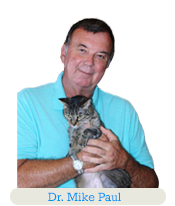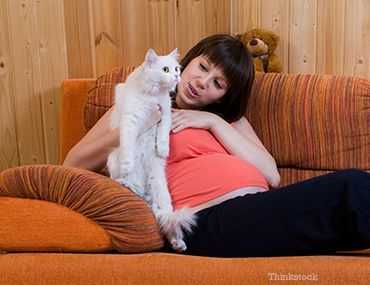
My daughter just gave birth to her first child the other day — a very happy occasion for sure. It made me think about how trends can come and go over the years: formula feeding vs. breast feeding, bulky crib bumpers vs. lighter weight crib liners, using cloth or disposal diapers — which is truly more environmentally friendly — to swaddle or not to swaddle? The list is endless.
At one time obstetricians were even in the habit of advising pregnant women to get rid of their cats! Today we know that such a drastic step is unnecessary, but the reason behind that recommendation is still worth discussing.
The concern was over a zoonotic disease transmitted between cats and people called toxoplasmosis. We now understand a lot more about the life cycle of the organism, modes of transmission (it’s not just cats), and the risk of infection so we can be much more specific and rational when advising pregnant women.
Some sort of guidance does, however, need to be provided. I stress this because apparently my daughter’s obstetrician never even asked if she had pets. That is, unfortunately, a swing of the pendulum too far in the other direction.
Toxoplasmosis in cats
The toxoplasma organism is a microscopic coccidian that only reaches reproductive stages in the cat but can exist in its immature stages in other mammals and birds. Unfortunately, these immature stages can still cause damage and inflammation in the affected host. This rarely happens in adults with healthy immune systems but can be a significant problem in the case of congenital infection of a baby where the result can be stillbirth, birth defects, neurologic or ocular diseases. This was why worried obstetricians were advocating that pregnant women got rid of their cats entirely. [Editor's note: Giving up your cat is not necessary! Some simple precautionary measures (detailed below and identified by talking with your obsterician) can keep your whole family safe and happy. Even the U.S. Center for Disease Control agrees that pregant cat owners do not need to give up their pets. Read the CDC's report here.]
The high incidence of the disease in cats only added to previous concerns over toxoplasma. According to the Companion Animal Parasite Council (CAPC), studies in the United States indicate a mean seroprevalence (cats with evidence of past exposure to the toxoplasma organism) runs about 40%. That’s a lot; however, an infected cat only sheds infective eggs for 1-3 weeks after exposure meaning that the reported number of cats shedding eggs at any given time is less than 1%. That’s a lot less. Add to this the fact that the eggs shed are not yet infective (that takes another 1-5 days outside of the cat), and it becomes relatively easy to avoid exposure from your own cat. (See our Toxoplasmosis 101 here.)
Other sources of toxoplasmosis
The other reason that women need to be aware of toxoplasmosis is because having a cat in your home is NOT the only source of exposure. Stray cats in your neighbor may be using your yard as their litter pan, so gardening or handling unwashed produce may also put you in contact with the microscopic eggs.
 People can also acquire the organism the way cats typically do — by eating mammals and birds that harbor the immature stages. Your cat may be hunting and eating smaller animals than you are, but the risk is still there.
People can also acquire the organism the way cats typically do — by eating mammals and birds that harbor the immature stages. Your cat may be hunting and eating smaller animals than you are, but the risk is still there.
Preventing toxoplasmosis infection
First of all, the risk to an unborn child occurs if a woman is NEWLY infected with Toxoplasmosis while she is pregnant or just before she becomes pregnant. Typically, once a woman produces her own antibodies against the organism, those antibodies protect the fetus. The important thing is that women be diligent about reducing exposure when trying to get pregnant and during pregnancy by following some simple steps:
- Keep cats indoors to discourage their exposure and do not acquire new cats during this time.
- Feed cats only cat food. Do not feed them meat.
- Have someone else in the household manage the litter pans.
- If you must manage litter pans clean them daily while wearing gloves and wash your hands well afterwards.
- Always wear gloves when gardening or working outdoors and wash your hands well afterwards.
- Wash or peel fruits and vegetables before eating them.
- Wash hands and utensils after preparing meals.
- Do not eat raw or undercooked meats.
Pets add a great deal to our experience of life. I cannot imagine not sharing our home with our cats. But along with the joy of pet ownership comes responsibility, and that includes the responsibility to be informed and to take precautions to protect both pets and people.
Take the precautions listed above to protect your unborn baby. Babies are one of life’s greatest joys. They are also life’s greatest responsibility and we must take every precaution to keep them safe and healthy. Babies and pets can share both our homes and our hearts.
Always discuss your concerns about your baby’s health with your physician.
If you have any questions or concerns, you should always visit or call your veterinarian -- they are your best resource to ensure the health and well-being of your pets.
